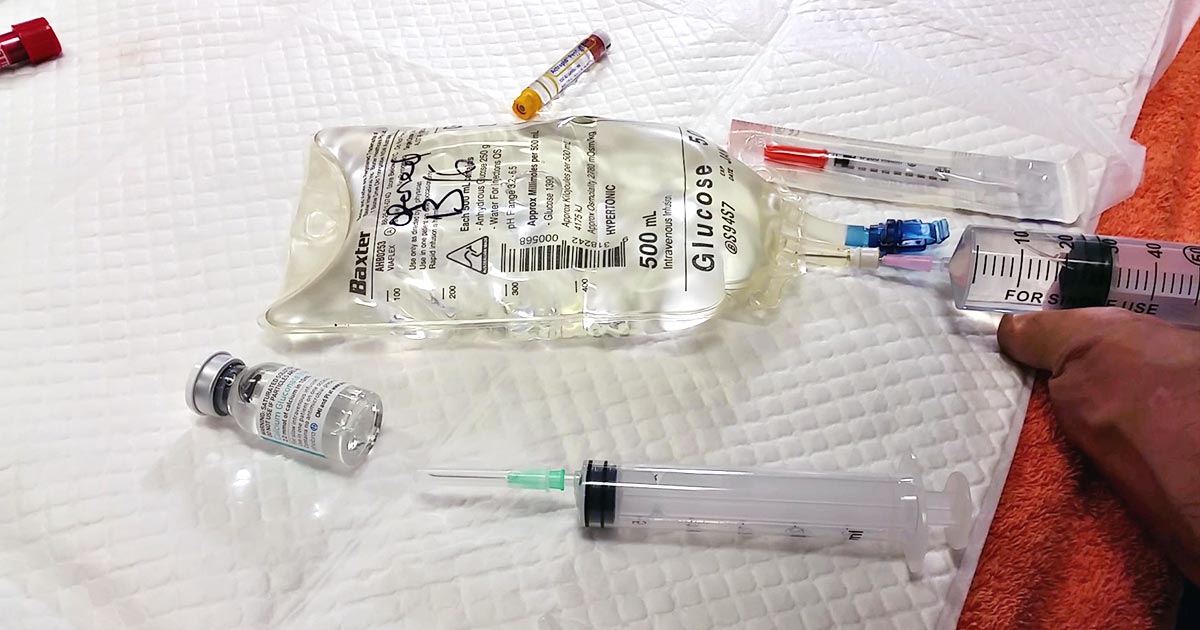
Treatment of hyperkalaemia is based on its severity.
Mild to moderate elevations
Mild to moderate elevations exist when the serum potassium concentration is between 5.5mmol/L and 6.5mmol/L. Treatment options are:
- IV crystalloids, which correct volume and dehydration deficits.
- Fluid therapy – the primary treatment, with the aim of:
- diluting serum potassium, by increasing the intravascular volume
- shifting potassium intracellularly, by alkalinsation
- Traditionally, potassium-free fluid (for example, sodium chloride 0.9%); however, a buffer solution can be used as the potassium is still lower than the serum potassium, but the buffers in those alkalinising solutions can help shift potassium intracellularly.
Moderate to severe elevations
Moderate to severe elevations exist when the serum potassium concentration exceeds 6.5mmol/L, or when cardiotoxic effects or metabolic acidosis is present. Treatment options are:
- IV crystalloids, which correct volume deficits and increase excretion of potassium.
- Calcium gluconate 10% – 0.5ml/kg to 1.5ml/kg slow IV over 10 minutes:
- Acts within minutes to protect against cardiotoxic effects by altering the threshold potential. This enables the previously hypopolarised cells to depolarise again.
- Must instigate other treatments, as it only protects for 20 minutes and does not alter serum potassium concentrations.
- Insulin and dextrose, or dextrose alone:
- Insulin (regular short acting) 0.25U/kg to 0.5U/kg IV, always with…
- 2g dextrose per unit of insulin, followed by a constant-rate infusion of 2.5% glucose at maintenance rates for 6 to 8 hours.
- Insulin drives potassium into cells, but must be followed with a constant-rate infusion of dextrose to prevent hypoglycaemia, due to the long-acting effects of insulin.
- Dextrose used alone will stimulate endogenous insulin production; however, this effect may not be adequate in severe cases in where exogenous insulin is also required.
- It is essential to monitor both blood glucose and potassium levels.
- Bicarbonate therapy:
- Only to be used for severe hyperkalaemia or metabolic acidosis (bicarbonate less than 10mmol/L).
- 1mmol/kg or 1ml/kg of 8.4% solution for 30 minutes is generally safe.
- Adverse effects of bicarbonate therapy are related to the speed of administration, so care must be given.
- It will act within 15 minutes by inducing a metabolic alkalosis, driving serum potassium intracellularly in exchange for hydrogen ions to try to produce electroneutrality.
- Bicarbonate may negate the cardioprotective effects of IV calcium by altering the pH, thereby increasing the binding of calcium to albumin.
- Terbutaline/albuterol (used under the cascade), which cause intracellular shifts.

Leave a Reply